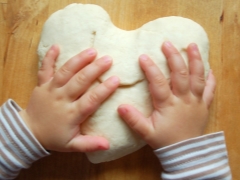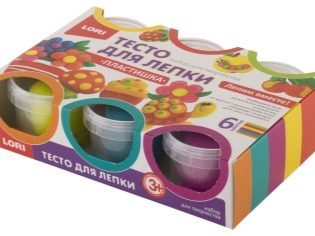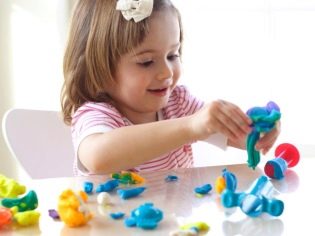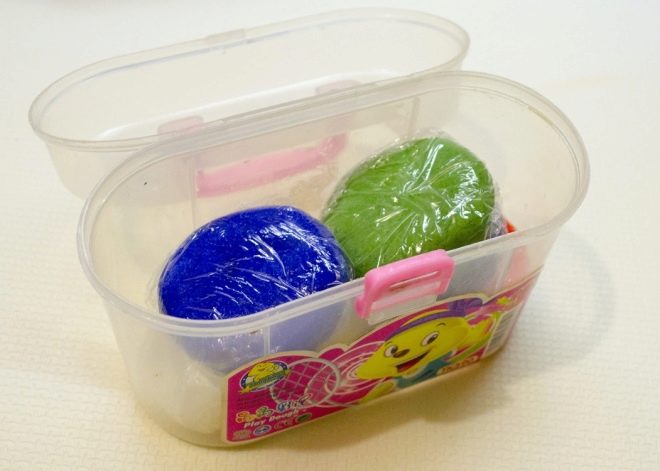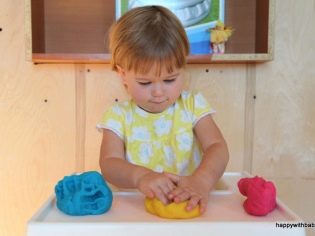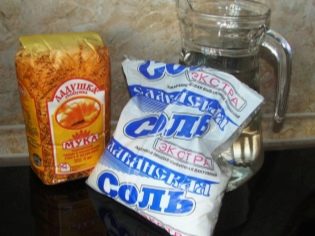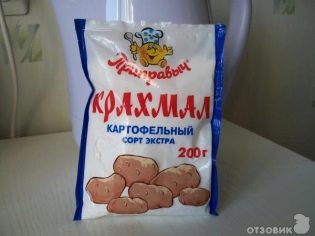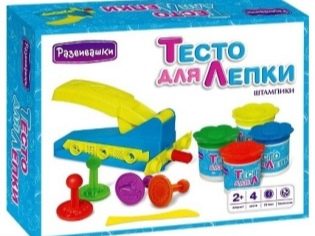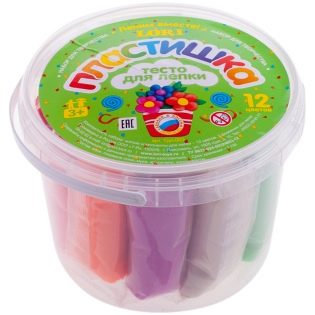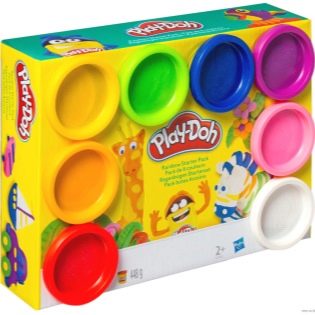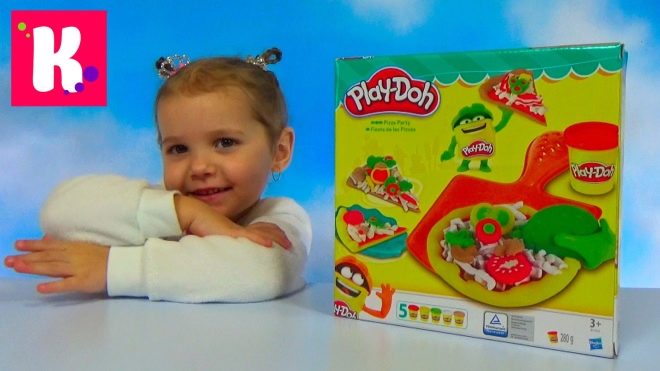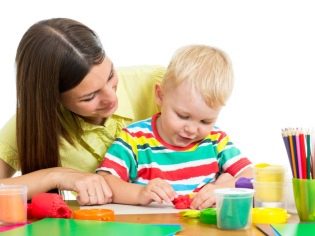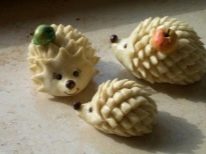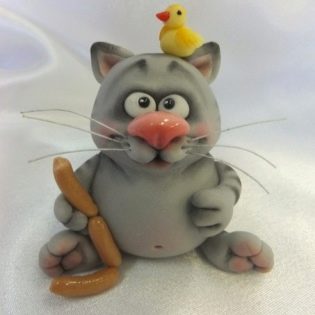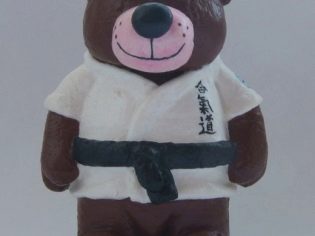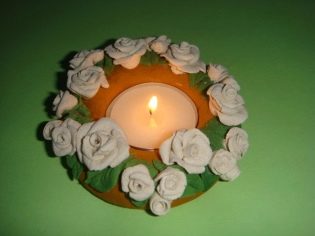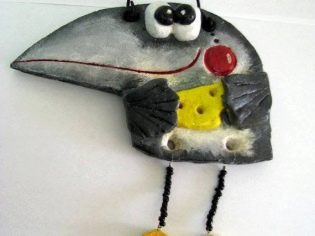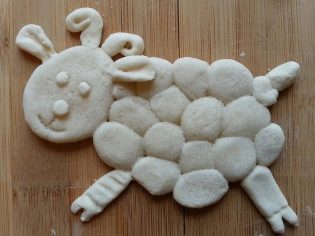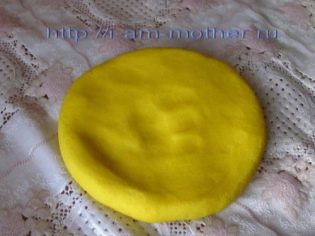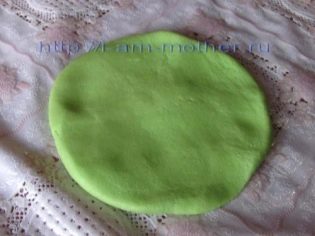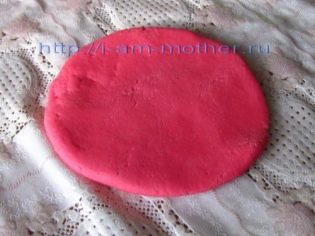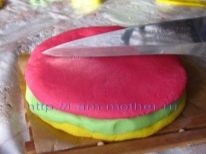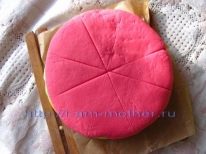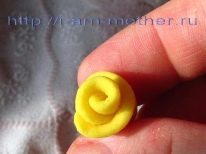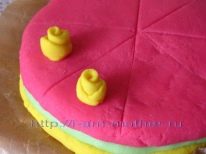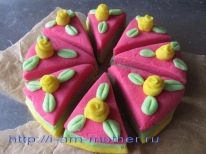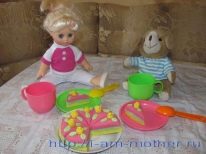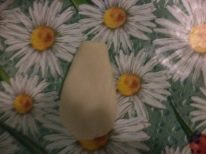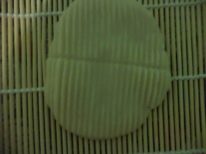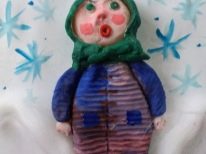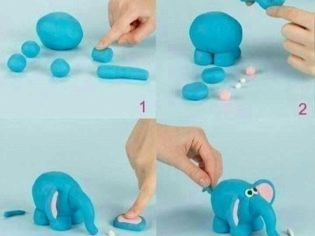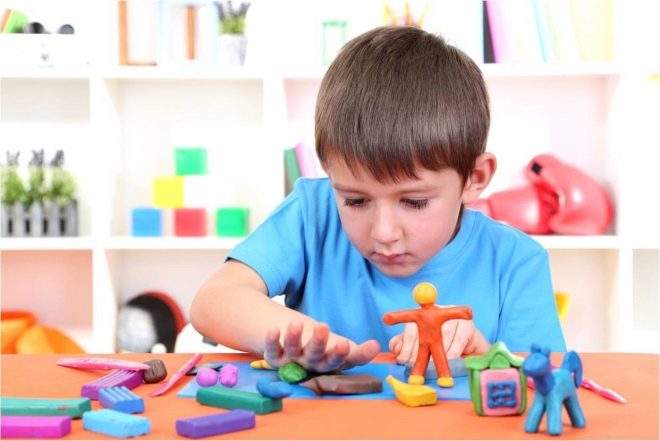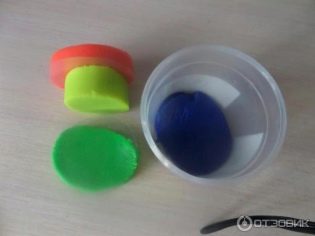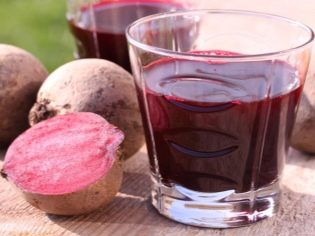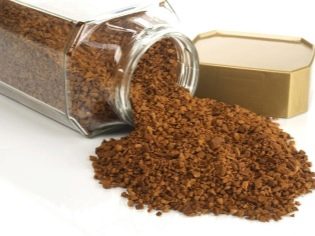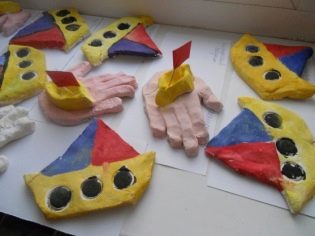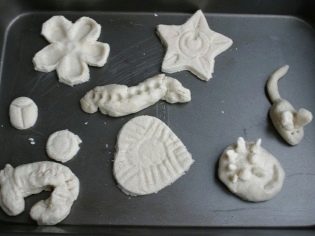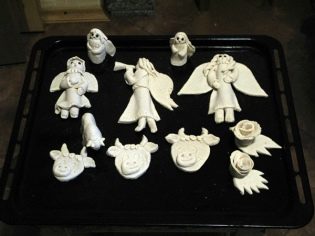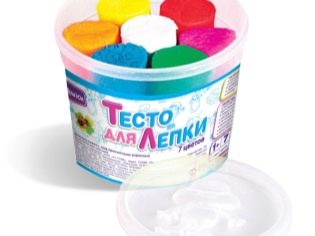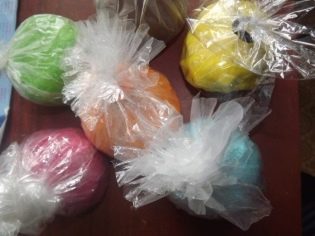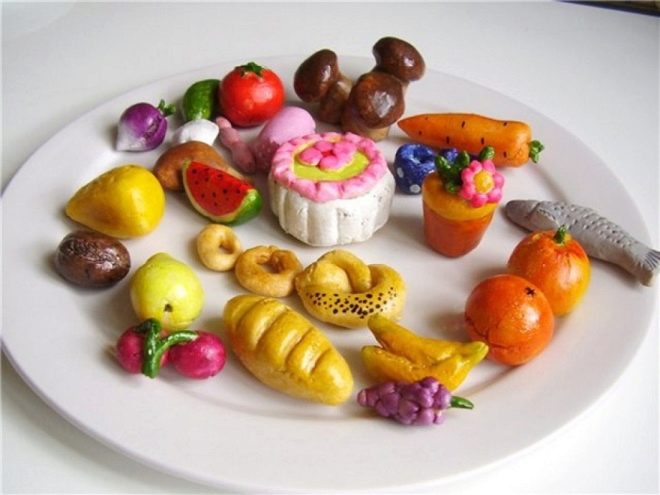Salt dough
Becoming a mass phenomenon relatively recently, the store salt dough quickly took that niche that previously could not be occupied by clay because of its too high density, namely, modeling with the youngest children.
Today, such a product is considered almost mandatory element of the development of any child, but although it looks like ordinary clay, there are still a number of differences that should be taken into account.
What is it?
It should be noted that salt dough is often called a kind of clay, but this is fundamentally wrong. Although the purpose is approximately the same, the composition and properties of the two mixtures are very different.
Let's start with the composition. In fact, even when plasticine was not yet a truly mass phenomenon, mothers sometimes replaced it with ordinary dough, which, in principle, is also suitable for modeling, but it is also safe because of its natural origin. Store salt dough - This is a product that fully corresponds to its name., that is, there are indeed components present in the raw materials of future baking.
Of course, the composition may differ from manufacturer to manufacturer - softeners, plasticizers, dyes are added there, but all this must be harmless so that the child can even try it without harm.
However, the mixture is not made for this, so the manufacturers mercilessly salt it, which forces the kids not to treat the mass as food.
Since the materials for the production of dough and clay are used radically different, it would be strange to expect from them the same properties. First of all, it is worth noting that the dough is much softer: it never requires a preliminary warm-up, you can sculpt it literally right away and without much effort, which is an additional important advantage for children under 3-4 years old.
The same quality is very useful in a situation where the child for some reason still pulls the mixture into the mouth, which the kids are very prone to - clay, even environmental, will become lumpy in the throat, but the dough will be quite swallowed.
Although products from most types of clay can not be called durable, the dough is even less durable. Due to the fact that the mass does not freeze like plasticine, it generally does not hold a complex shape so well. True, it is able to dry out, but even then it is not an example of strength and hardness, as it begins to gradually crumble. By the way, unlike plasticine, it is impossible to restore the completely dried dough, and recovery of cheap dough samples is not possible even when it has dried at least from above.
Because of this, the dough for modeling has to be stored in an airtight container, but at the same time it is quite possible not to buy it, but to make it yourself in any quantity necessary for a child, and quite inexpensive.
What is it for?
Dough modeling is somewhat similar to modeling clay, but is more simplified, a kind of preparatory stage for it. The babies perceive the mix as another device for the game, but working with such material helps to accomplish important goals and objectives - it is very useful. for the development of fine motor skills, because in the future it will allow the child to master any complex and precise manipulations much faster.
Lesson modeling also contributes to the development of the muscles of the hands - it turns out that a child engaged in modeling of dough from the age of a year and a half, has much more developed hands than a kid who started right from clay in 3-4 years.
If at a very early age the kid rather kneads the dough in an abstract way, then as he grows up, he begins to put a certain creative component into the process. Firstly, he learns to give the mass the desired shape, which in the future will help him in the manufacture of any things with his own hands. Secondly, such exercises greatly contribute to the development of fantasy - as the task becomes more complex, the child begins to think through various possible ways to solve it.
Making a figurine from several pieces, he begins to better understand the concepts of the private and the composite whole. Reflections of this kind from a very early age can develop the intellect so much so that in the future a raised baby will be able to solve similar tasks at a completely different level - for example, to design complex engineering structures and mechanisms.
In recent years, the use of salt dough for the comprehensive development of the child has been officially recognized even by leading experts involved in the upbringing of children. Today, this material is massively used in children's institutions, and in bookstores you can even find specialized manuals for working with the test. One of these books released I.A. Lychagin. The publication was published in 2017 under the name "Sculpting salt dough with children 3-4 years old."
The author tries to show ways to really interest the child, teaching him to make really beautiful figures with his own hands, and recommends his work both for group classes and for home use.
Types and composition
Although the dough seems quite simple material, which does not provide for a special variety of ingredients, these days it is made from quite different materials. In addition to the classic options of flour (usually rye) and salt, a variety with a large addition of starch is also popular.
Using different ingredients in different proportions allows you to vary the thickness of the mixture and ease of working with it, creating a formless, but very soft dough for very tiny children and more elastic, but with great creative potential - for those who are a little older. Some manufacturers also call dough for modeling their products from clay, but this is fundamentally wrong, since the consumer has become accustomed to eating such a mixture, whereas the clay is unlikely to benefit the baby.
Dough for modeling is also sold in completely different concepts. There are multi-colored sets, the idea of which is close to that used in sets for clay. For young children, they often produce color dough, which is not sold as sets, but individually - parents simply choose the desired color. Such a product is not designed for complex crafts, but rather to simply interest the child in the process.
Finally, colorless (conditionally white) types of dough are occasionally found - it is calculated on the fact that the dye is mixed by the parents themselves or by the small creator, although the possibility of subsequent dyeing of an already dried product is allowed. Dough for modeling can decorate not only dyes, but other ingredients, such as sequins, glitter, and so on, but Such material should not be given in the hands of children under three years of age.because such decorations are not edible.
In addition, the dough for modeling differs in quality and concept. For example, in our country, mixtures under the Plastika brand are very popular, but although they are not bad, they mostly attract the consumer with their low price.
At the other extreme are sets Play dohknown around the world - they are expensive, but they are distinguished by 100% safety for a child, good quality, as well as a complete set of sets with additional tools for modeling and playing, detailed instructions for creating figures, and so on.
Actually, you can get into the topic in more detail by studying the Youtube channel, known as Miss Katy.
The channel has already collected more than five million subscribers - in the video he is shooting, the little girl Katya, together with her father, is trying to sculpt various figures from salt dough. Of course, masterpieces (really workshops) are created mainly by dad with very little help from her daughter, but the leaders very clearly show the features of modeling from a huge number of sets from different manufacturers.
One of the videos of the channel Miss Katy (Miss Katy) you can look further.
How to use?
There are no specific rules for sculpting from salt dough; only a general technology has been developed for how to teach a child to create something similar to his plan. Training should be carried out in stages. At the earliest stages, it is enough to let the child knead the dough — even such an exercise will develop the motor skills of the hands. Next, you need to show the child simple methods of working with the mass - teach him to roll balls and sausages.
Here it is very important to work actively with the child, because without the help of the parents, he will most likely stop at the balls and sausages. At first, parents make the main robot, their task is to show that masterpieces can be created from dough.
In this case, it is impossible to remove the small from the process - on the contrary, it must be involved, asking to make some simple small details.
If a full-fledged set of dough and tools for working with it was purchased, there may be templates for complex parts inside - then even a child can make those.
It should be noted that some manufacturers make the dough unsalted, emphasizing that the material for modeling and food are not always different things. In the end, the dough figurine will not replace a full-fledged toy, because it is short-lived and too soft - so why not eat it? If the mass is made with such a calculation, the packaging should be described technology to bring the made figures to a state of readiness for eating without loss of appearance.
What can blind?
Although in general, salted dough holds the shape of clay clay much worse, products made from some of its more dense types are quite capable of holding a shape that does not involve too complex and thin parts. If the production of clay from dough occurs at home, then to achieve the desired result, the mixture should be more dry - contain less water and more flour, salt and starch.
However, many parents are lost in front of the question of what kind of figures can be made from this material, so consider the most common creative ideas, which are not so few.
Probably the most favorite topic for children when creating products from dough and clay is animals. The most popular are human friends and cats everywhere, dogs and cats, but other options are possible - in particular, in the countryside, children like to make chicken or calf figurines. From other representatives of the animal world demand butterflies, fish, dolphin.
The flora, of course, also has the right to be represented in children's art, although girls often turn to it - they love to sculpt flowers with their own hands, as well as fruits and vegetables. Here we smoothly turn to the topic of food, since girls are also interested in making cakes and buns - for such purposes, by the way, it is very practical to use dough that does not contain salt.
Toys are another source of inspiration for children - they may want to fashion their favorite car or bear.
With the right approach, the child can create an entire composition with his own hands, for example, depict how cats play with a ball of yarn. Excellent, very warm crafts will be sculpted basket with the same fruits and vegetables. However, a complex composite craftsmanship from a multitude of details does not necessarily create a three-dimensional one — small talents can create pictures from dough on a flat surface. You can, for example, depict autumn, when the sun illuminates the trees with yellow and orange crowns.
With the further development of their own skills, children are able to create more complex things - for example, a candlestick. Who said that the origami bird should be made only from paper? It can also be molded from the test! Well, trinkets made from such a mass can not be used for its intended purpose, but the child will understand the general principle, and then be able to repeat his masterpiece from a more durable material.
Master class for beginners
In order to interest a child, it is impossible to set tasks for him, the fulfillment of which he will definitely fail; At the same time, it is very important that he immediately see that he does not produce abstract sausages, but something more interesting. Teach your baby sculpt need to step by step, and if the parents decide to try to do this on their own, but do not have enough information about how to solve the problem, they will be helped by a pedkopilka - a collection of ideas for finished products from the same dough, each of which contains a description of manufacturing methods and equipment.
Of course, it is much easier to train a girl, because mother and the girl are usually engaged in learning, in many respects, she herself is interested in what an ordinary woman does in everyday life.
For a start, you can be interested in her joint creation of a significant dish, during which the baby will be assigned exclusively creative role, albeit under the control of her mother. For example, we ask the girl to roll up sausages from dough and decorate them with a loaf, or even let the little one do it under supervision.
A child will certainly be proud of the fact that with his participation real food was made, which everyone eats, and may be interested in both modeling and cooking, although at such an early age it is worth while limiting himself to one modeling. However, the "kitchen" inclinations of the girl can also be used to develop creative abilities - for example, modeling toy pies and buns develops the same motor skills. In the future, you can use any new interesting ideas.
If, for certain reasons, the child has a completely uninteresting kitchen theme or he has already passed this stage, it is worth taking up a more complex project - creating a toy in the form of a person. Sculpting dolls from color dough in practice, it turns out to be much simpler than it might have seemed at first glance, but the help of adults is still necessary for the kid, at least at first.
In fact, the doll is made from circles and ovals of different colors - it is necessary to make the limbs, torso, head, eyes and nose will be separate parts. Planning for the future of the sculpture and its assembly for the first time is carried out exclusively by adults, and the child himself, at the request of the “leader,” makes the details themselves and at the same time observes how to assemble a single whole from them.
To learn how to make a ballerina with salt dough, see the following video.
Methodical development
Even in the home environment, it is possible to approach the solution of the problem of teaching children to sculpturing seriously. For this purpose, an educational program developed by professional teachers for use in kindergarten or other children's institutions and made according to GEF. Those are freely available for parents who want to additionally work with the kids on their own, it is possible to print them, and the open lesson will help you see the basic principles of learning interaction with the child.which is regularly held in most kindergartens.
In this case, parents in some cases can themselves create such programs for their own use.
The basis is to take any ready-made program - it will be a kind of instruction, a plan-outline for parents, which allows you to make the final result logical and focused, but small details can be changed at your discretion.
In the process of self-thinking through the program, you must first decide for how old your baby is. This is the only way to formulate adequate tasks available for the child to perform. To better understand what tasks children are able to perform at different ages, you can use all the same ready-made programs, but in general there is nothing difficult there.
The younger group (1-2 years) predominantly kneads the dough and rolls sausages with balls, the middle one (3-4 years) can sculpt composite figurines with the help of the older ones, and the older one (5-6 years old) is capable of performing quite complex tasks - creating paintings and composition.
At the same time, the task should not be formulated as “to make such a figure”; the creator of the program should be repelled only by those useful skills which may appear in the child in the process:
- For the smallest, such tasks are the development of motor skills and muscles.
- Middle-aged children should be given tasks aimed at deepening their interest in modeling (achieved both by the bright color of the material and an attractive end result), more thorough familiarization with properties, the development of the concept of creativity and the nature of the surrounding objects, as well as the formation of basic modeling skills - giving the piece a mass of the required form.
- At an older age, emphasis is placed on creativity and fantasy - the child is already able to do something himself, and all that remains is to push him to make his creations more and more complex.
Since adults have the task of sculpt this or that, they themselves must first think about how they would do it. Relying on the child’s imagination, as well as your own, is not worth it, so a visual scheme that allows adults to help the child create the conceived figure will be very useful. Parents should think about it - and now they themselves could already do what the little one is proposing to do?
It is clear that the child alone is unlikely to make a masterpiece, the image of which accompanied the proposed scheme, but the work is still carried out with adults, who should actively help.
It is worth paying attention also to the fact that the program is usually drawn up for one or several lessons, but in order to fully master the skill of modeling, a serious systematic approach is very desirable. It would not be entirely fair to interest the child in this type of creativity, but to confine himself to a couple of lessons, and then abandon the initiative despite the fact that the child had time to show interest and achieve certain success.
If the situation has changed and continue classes in the previous format for some reason is no longer possible, you should think of where to give the baby so that he will continue to improve his level.
How to soften?
In the open air, any salt dough dries out rather quickly and loses its elasticity, and although more expensive options are generally somewhat more durable, even they usually stretch for no more than a month or two. Some cheap varieties do not provide for the possibility of recovery, but because of the low cost they are not very sorry, but expensive and high-quality products usually allow you to extend their service life. True, if the hack or a piece of dough dried out completely, there's nothing you can do.
To make the mass as a whole a little more plastic, you can put a small amount of hand cream or any other into it, preferably water-based.In a situation where a piece of dough is covered with a hard crust, but there is confidence that inside it is still soft, you can try to soak the mass. It is usually recommended to do this under running warm water, simultaneously kneading the mixture.
In the end, it must be carefully pressed - it should not be very liquid, as well as stick to the hands. There are recommendations for further drying of the mass in the microwave, but this procedure is more focused on the mixture, where there is no flour at all or its percentage is insignificant.
Please note that when macerating dough dye almost always washed out, at least partially. In this regard, it is worthwhile to preliminarily consider how to restore the balance of color — for this, dyes of natural origin must be mixed into the mass.
Usually in this role are used the juices of fruits and vegetables of the corresponding color, as well as coffee and mild spices.
How to dry crafts?
There are several ways to make dough articles preserved for a long time. Physically, the easiest way is to dry in the open air, but it takes a very long time, because the product dries out about a millimeter per day. You can speed up the process by drying the product on the battery, but this method is fraught with the deformation of the product; In addition, it is completely unsuitable for complex crafts, in which new parts are added only after the old ones have dried.
It should also be noted that the figure, which is not fully dried up, begins to self-destruct due to the presence of liquid batter inside.
For this reason, dough products are more often baked. It is noted that the microwave for such purposes will not work, you only need an oven - gas or electric. Experts point out that drying is faster on a dark baking tray, so the temperature should be slightly reduced. The indicator of the temperature is strongly dependent on the design of the oven, the type of dough and the size of the craft.
For this reason, we single out only the general principle - with time the temperature rises. You can determine the readiness of the product by tapping on it - a completely dried figure will make a ringing sound, and not a deaf one. It is also important to remember that figures of colored dough baked at a temperature not higher than 125 degrees (and all the rest - no more than 150), but in general, products made from colored material are better dried in air.
Storage conditions
Raw dough as a material is recommended to be stored in a sealed package, in which it is sold, because after a day of being outdoors, its surface begins to lose plasticity.
Ready crafts from this material must be protected from water, because even a slight ingress of moisture will lead to serious deformation of the product. It is also necessary to dry it very carefully, because many types of dough then crack. Many observers even point out that cheap mass grades are generally not suitable for long-term storage.
In order to protect the figure from accidental ingress of water, it is advised to coat it with a thin layer of hairspray after it has completely dried.
Examples of beautiful work
In the hands of real masters, ordinary salted dough turns into real masterpieces, and although it is not as good for everyone as everyone, it is possible and necessary to strive for the ideal.
This photo shows that the animal can be made not even from a single piece of dough, but from a variety of improved sausages. Although the product is flat (like most of the dough figurines), and playing with it is problematic, it can still be a reason for the baby’s pride if such a thing is done with his direct participation.
At the same time, dough compositions can look no worse than real art. Probably, 99% of parents can not do so, as in the photo, but even such an example itself can be an excellent motivation for the child, and he also shows that the dough as a material should not be underestimated.
Although the dough can not withstand a large weight of individual parts, it is possible to make small and very believable objects out of it. Vegetables, fruits and other toy food can significantly diversify the gameplay with real toys, but this example looks so believable that it causes not only admiration, but also appetite.
